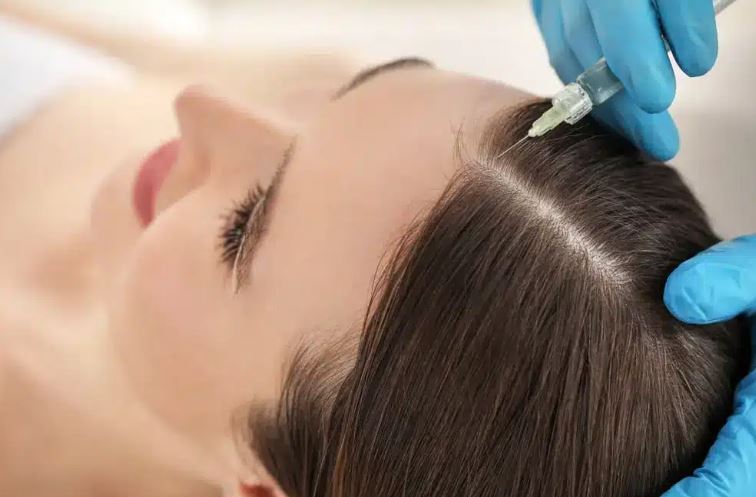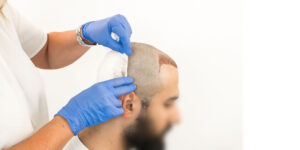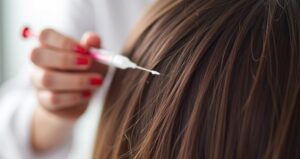Hair loss can be one of the most emotionally challenging experiences for both men and women. As science advances, several treatments have emerged, but one that’s been gaining increasing attention is PRP, short for Platelet-Rich Plasma. This technique uses your body’s natural growth factors to stimulate hair regrowth. Before you decide to try this procedure, it’s important to understand what it really is, how effective it can be, and what risks it might carry. The goal of platelet rich plasma hair treatment is to revitalize dormant hair follicles and promote thicker, healthier hair growth using your own blood’s components.
Understanding How PRP for Hair Works
PRP therapy involves extracting a small amount of your blood, processing it to concentrate the platelets, and then injecting the enriched plasma directly into your scalp. Platelets are packed with proteins and growth factors that aid in tissue repair and regeneration. When injected into areas experiencing hair thinning or loss, these platelets can potentially stimulate the stem cells in hair follicles, encouraging them to transition from a resting phase to an active growth phase.
The procedure itself is minimally invasive. Most sessions last between 30 to 60 minutes. A centrifuge machine is used to separate the platelet-rich plasma from other blood components, and then the PRP is injected in small quantities across the targeted areas. Since the process uses your own blood, the chances of allergic reaction or rejection are significantly lower compared to synthetic alternatives.
Who Should Consider PRP?
PRP is most commonly recommended for people experiencing androgenetic alopecia, also known as male or female pattern baldness. It’s ideal for individuals who are in the early stages of hair loss or those who have thinning areas but still retain hair follicles. PRP won’t work on completely bald patches where follicles are no longer active. It can also be used as a complementary treatment after a hair transplant to enhance healing and improve the density of new hair.
Age is another factor. While there’s no strict age limit, results tend to be more effective for individuals between the ages of 25 to 50, where hair thinning is recent and more likely reversible. People with medical conditions affecting platelet function, or those taking blood thinners, may not be suitable candidates and should consult their physician beforehand.
What Results Can You Expect?
Managing expectations is crucial. PRP isn’t a magical cure that will give you instant results. Most people begin to see improvement in hair texture, thickness, and shedding reduction after three to four sessions, spaced about four to six weeks apart. Full visible results can take anywhere from three to six months, with continued improvements seen up to a year if maintenance treatments are done.
The degree of success varies based on genetics, underlying health conditions, lifestyle, and how early you start the treatment. Some patients report significant regrowth in thinning areas, while others may see only modest improvement. In clinical studies, PRP has shown promising results, especially in cases of mild to moderate hair loss. However, it’s not guaranteed and may not work for everyone.
Before and after photos can be helpful for visualizing potential outcomes, but it’s important to remember that individual results will differ. A professional consultation with a dermatologist or hair restoration specialist can help you understand what results are realistic for your specific condition.
Are There Any Side Effects?
One of the most appealing aspects of PRP is its safety profile. Because the treatment uses your own blood, there’s virtually no risk of disease transmission or immune rejection. However, as with any medical procedure, side effects can still occur.
Common side effects include redness, swelling, and tenderness at the injection sites, which usually subside within a few hours to a couple of days. Some patients might experience a mild headache or tightness in the scalp. Rare but possible side effects include infection, injury to blood vessels, or scar tissue formation.
To minimize risks, ensure the procedure is performed by a qualified medical professional in a sterile environment. Unlicensed or poorly trained providers may cut corners, increasing your chances of complications. Post-treatment care, like avoiding harsh hair products, sun exposure, and strenuous activity for 24-48 hours, can also help reduce side effects.
Cost and Commitment Considerations
PRP is not a one-time fix. Multiple sessions are typically required to achieve and maintain results. Most treatment plans involve an initial series of three to six monthly sessions, followed by maintenance treatments every three to six months. This ongoing commitment can become expensive over time, especially since most insurance providers do not cover PRP for hair loss as it is considered a cosmetic procedure.
On average, each session can cost between $300 and $1000 depending on the clinic, the region, and the experience of the provider. It’s important to weigh the potential benefits against the cost and to be wary of overly cheap providers offering steep discounts, as this may reflect lower quality or unsterile practices.
When budgeting for PRP, consider that results may take months to manifest, and maintenance is often necessary. It’s not a quick-fix solution but a gradual process that, for many, becomes part of a long-term hair care regimen.
Final Thoughts
Hair PRP therapy is a promising, natural treatment for individuals looking to combat hair thinning without resorting to surgery or harsh chemicals. It leverages the body’s own healing mechanisms to stimulate hair growth, offering a relatively safe and minimally invasive option. While results can be impressive for some, it’s not guaranteed for all, and realistic expectations are crucial.
The decision to undergo PRP should be based on a thorough consultation with a knowledgeable provider, an understanding of your specific hair loss condition, and a willingness to commit to multiple sessions. It’s not a miracle cure, but for many, it can be a worthwhile step in restoring confidence and slowing hair loss progression.






